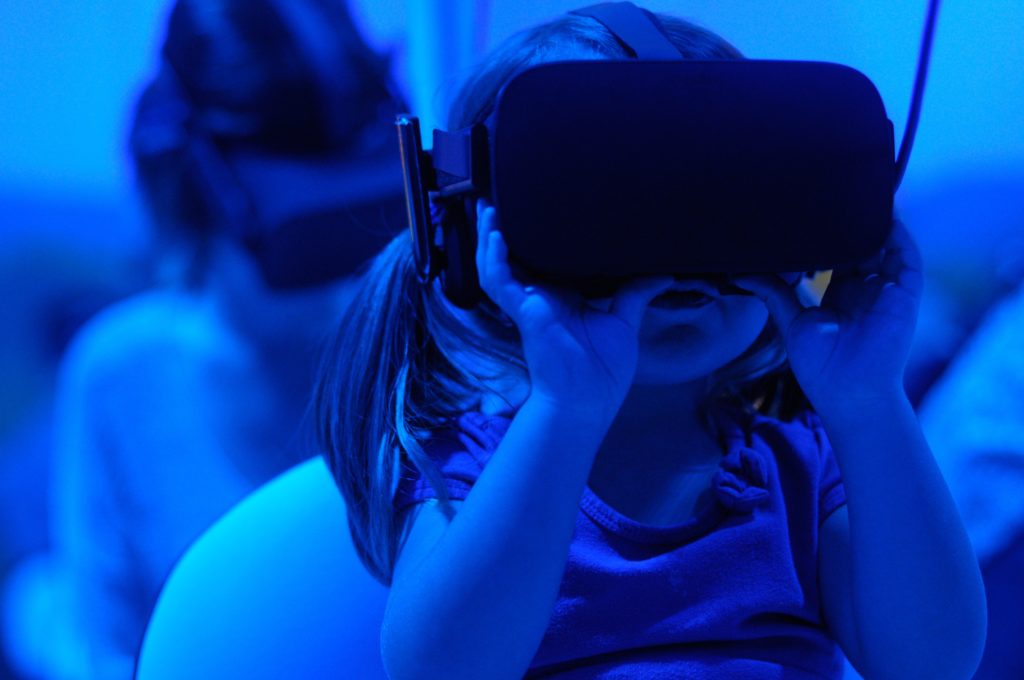By Samuel Huber, Founder and CEO, Admix
Just as monetising mobile was the biggest opportunity of the previous decade, monetising the 3D worlds is the biggest opportunity of the next decade. It’s time to get onboard.
From the radio, to the telephone, TV, desktop computer and mobile, the last 150 years have been filed with technological progress that have transformed our private and professional lives. Today, we are approaching another media transition: spatial computing – commonly known as immersive technology, XR or VR/AR.
Just as the internet defined the transition between offline and online, spatial computing will define the transition between 2D and 3D: for the first time, content won’t be limited to our screens, but will be overlaid on the world around us. Whether it is VR, AR or any ‘Reality’, what matters is that devices will understand the space around us to place digital content, enabling us to interact with the world in a much more natural way.
Although it has been the subject of research for multiple decades, the modern spatial computing era really started after Facebook acquired Virtual Reality start-up Oculus for $2B back in 2014. Recovering from this hype, the VR market has been growing steadily, with 400% year on year increase in terms of content creation, and tens of thousands of developers starting to build for VR.
The other driver of spatial computing is Augmented Reality. Already 400M smartphones support AR today through Apple ARKit and Google ARCore, and that number will jump to 1.6B by 2021. Separately, companies like Microsoft or MagicLeap recently launched their first device, and it is rumoured that Apple will follow in 2020.
Today, we can already measure tangible benefits in various industries, including healthcare, entertainment, social, and e-commerce. VR has proven to heal phobias, and AR to increase productivity for dozens of companies. Spatial computing’s impact on humanity will be bigger than the printing press. Beyond the gimmick, the revolution is inevitable, and it is well under way.
Creating a business model
Historically, the emergence of new media has always created huge winners, such as Microsoft, Google or Facebook. These companies have all defined a business model enabling market efficiency in this network: Microsoft by enabling developers to publish their apps, Google by enabling anyone to monetise their websites, and Facebook by enabling small businesses to reach customers.
Consequently, they incentivized creators to keep creating, and were the main driver growing their industry. They’re able to reinforce their positions through network effects, which led to a near monopoly in their respective markets. More creators attract more money which attracts more creators, and so on.
Today, despite billions invested, the business model for spatial computing remains unclear. Apple, Google and Facebook are focused on building hardware, more robust SLAM software, or products aimed at one side of the market – but they are not enabling market efficiency. They are not incentivising the demand-side nor fulfilling the supply-side.
And yet the opportunity is huge.
On the creator side, tens of thousands of talented developers are already building VR and AR experiences today, hungry to get their content discovered, and monetize this audience. Dozens of studios are held back, or had to close doors, because of the limited revenue opportunities.
The lack of alternative revenue from paid content, more than the nascent audience, is what paralyses the ecosystem. Content creators deserve a suite of promotion and monetisation tools to generate revenue.
On the advertiser side, the appetite is even clearer – hundred of brands have created AR experiences and have seen tangible benefits as a result. Yahoo reported that interaction with AR ads in its mail app led to a 25x improvement over traditional banners. Another study by 19 Crimes Wine Maker shows that its AR app helped the brand grow 60% in volume sales. These are not isolated examples – according to Emarketer, spend for AR ads will triple from $420M in 2018 to $1.2B in 2020.
However, advertisers are bound to spend this money by producing and distributing their own experience – like Ikea has done – or through Snap Lens or Facebook Spark. Therefore, this huge spend doesn’t benefit the content creators at all, and doesn’t grow the market.
The opportunity
Cracking the business model for spatial computing will be about building the infrastructure to facilitate transactions between supply and demand. This is what my company Admix has been focussed on for almost two years. We see Admix as a ‘virtual estate’ company, enabling developers to sell areas of their content to advertisers.
Last year, we raised $2.4M seed to build and market our programmatic offering, that is now used by 100 developers, and serving over 250M ads requests per month in VR and AR. While we have made huge headway, fostering the fastest growing VR/AR community with 7000 developers and connecting to five of the largest programmatic partners in less than a year, we are just getting started.
What will it take to make this market work?
First, there is a design challenge: traditional adverts just do not work in VR and AR. They are terribly intrusive, out of place, and something that customers hate. Just as mobile ads are optimised for the smaller device, spatial computing also requires its own ad units.
Starting fresh on a new media gives us the opportunity to build a better future for advertising, that works for all parties involved: not just publishers and advertisers, but also the end users, who are often forgotten by the industry.
Forget banners and desperate call to action: spatial computing ‘adverts’ will be a mix of experiential marketing, 3D products, and e-commerce. It also won’t rely on personal data as much as contextual data.
Second, there is the technological problem of delivering programmatic ads into a non-web environment, and getting existing agencies and ad exchanges (who control the brand dollars and infrastructure, respectively) to adopt it. Some companies, like Immersv, Vertebrae, or Blippar, have had a shot at it.
They were very early on the market, and took an agency approach, providing services rather than tech, which isn’t scalable. Advertisers are notoriously bad at lagging behind media adoption, but by providing a simple solution, and great performance metrics, we can minimize that lag.
Once the model fully cracked, companies will race to capture the value unleashed from this ecosystem, and defend their position through the power of network effects: more inventory attracts more buyers, who attract more inventory and so on.
Monetising 3D worlds is the undoubtedly this industry’s biggest opportunity over the next decade, and a clear category leader will emerge within the next 3 years.
The marketplace mechanics are unforgiving and generally lead to a winner-take-all situation, so it is worth jumping early.
As our mission, “empowering developers” states, we’re standing on the shoulders of giants, enabling market efficiency for this new media, so that more creators can get paid and delight us with more content.









